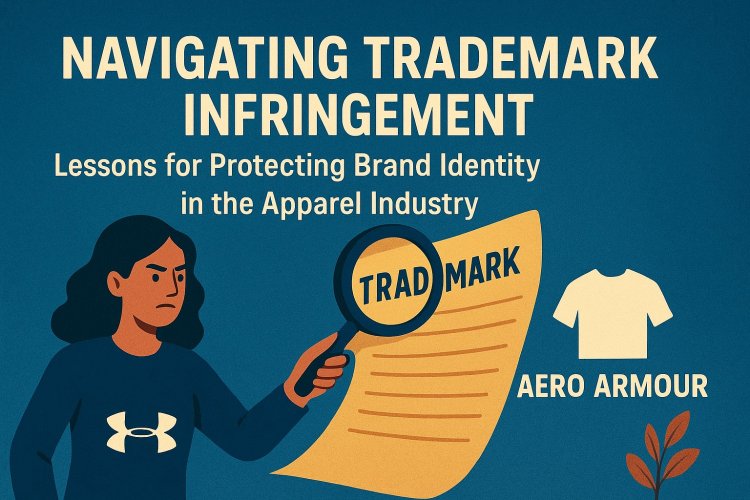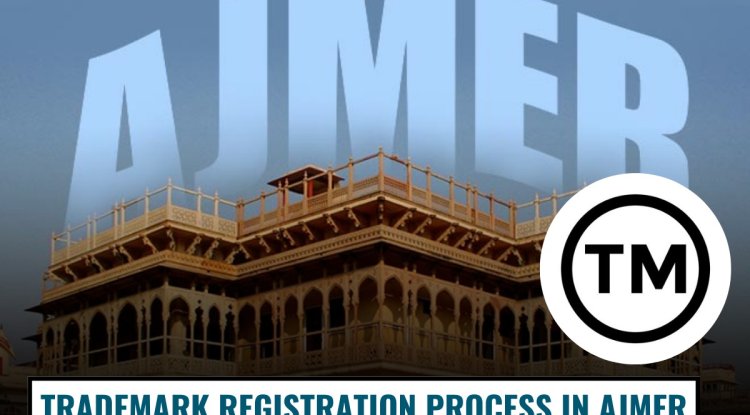Navigating Trademark Infringement in Apparel: Key Lessons from Under Armour vs. AERO ARMOUR
This article examines the Delhi High Court’s 2025 ruling in Under Armour Inc v. Anish Agarwal, where the global apparel giant successfully challenged deceptively similar marks like “AERO ARMOUR.” The court emphasized dominant elements, the anti-dissection rule, global appreciation test, initial interest confusion, and dishonest adoption—ultimately granting a broad injunction. The decision offers critical guidance for brand owners on trademark protection, consumer confusion risks, and strategic IP enforcement in the apparel industry.

Introduction
In the competitive world of sports and casual apparel, brand identity is paramount. The protection of trademarks is a central legal pillar that ensures companies can maintain their brand integrity and consumer trust. One of the significant recent cases highlighting these principles is Under Armour Inc v. Anish Agarwal and Another, FAO(OS) (COMM) 174/2024 & CM No.46175/2024 & 52564/2024, decided by the Delhi High Court on May 23, 2025. This case not only raises important questions about trademark similarity and infringement but also emphasizes the measures companies must take to protect their intellectual property. Under Armour, Inc., a globally recognized brand in sports and casual apparel, filed an appeal against Anish Agarwal and his company that was marketing apparel under the name "AERO ARMOUR." Under Armour claimed that this name was deceptively similar to its own established trademark, "UNDER ARMOUR." The company sought an interim injunction, seeking to prevent the respondents from using the conflicting marks pending further legal proceedings. The procedural posture of the case involved an intra-court appeal under Section 13 of the Commercial Courts Act, 2015 which allowed Under Armour to challenge the Single Judge’s order that had declined a broad injunction. Instead, the Single Judge had imposed limited restrictions, leading Under Armour to appeal for a more decisive resolution.
Legal Framework: The Trade Marks Act, 1999
This case hinged fundamentally on the application of the Trade Marks Act, 1999, particularly sections addressing the likelihood of confusion. The core of Under Armour's argument involved analysing whether the marks "AERO ARMOUR" and "AERO ARMR" were deceptively similar to "UNDER ARMOUR," a well-established trademark. Under Section 29(1) of the Act, a trademark is deemed infringed if it is identical or similar to an earlier registered trademark when applied to goods or services that are identical or similar.
Key Issues Raised in the Case
The case raised several important questions:
· Deceptive Similarity: Is "AERO ARMOUR" deceptively similar to "UNDER ARMOUR"?
· Anti-Dissection Rule: How should courts approach the evaluation of composite trademarks?
· Global Appreciation Test: What standards should apply when assessing the similarity of two marks?
· Initial Interest Confusion: Does the possibility of initial confusion among consumers matter under trademark law?
· Dishonest Adoption: Was there evidence of intent to mislead consumers by the use of "AERO ARMOUR"?
To know more about this you can follow the link below:
Appellate Court Rationale
Upon reviewing the case, the Delhi High Court allowed Under Armour's appeal, setting aside the Single Judge's order. The court’s decision was grounded in several key rationales:
· Anti-Dissection and Dominant Elements: The Court emphasized that trademarks ought to be assessed in their entirety. The Single Judge's error was to dissect the composite marks by removing "ARMOUR" from "UNDER ARMOUR" when conducting the comparison. The Court reiterated that "ARMOUR" is a dominant component across both marks, significantly shaping their overall impression.
· Global Appreciation Test: The Court remarked that trademark analysis should not overly focus on design elements and price differences that can mislead the similarity assessment. It emphasized that despite design variations, the phonetic and visual resemblance was strong enough to invoke consumer confusion.
· Similarity of Goods and Channels: Both parties were found to be selling similar apparel in Class 25, including T-shirts and hoodies. The Court highlighted that the distinction between sportswear and casual wear was artificial given the overlapping channels through which consumers access their products.
· Initial Interest Confusion: The Court ruled that even transient consumer confusion before purchase is relevant under Section 29(2) of the Trade Marks Act. The potential for initial interest confusion supported the proposition that consumers might mistakenly assume an association between the marks.
· Dishonest Adoption: The Court identified evidence of dishonest adoption of the "AERO ARMOUR" mark, particularly noting the similarity in placement of the marks on apparel. This factor, combined with Under Armour’s strong market presence, bolstered their case for an injunction against the respondents.
The Delhi High Court granted an interim injunction prohibiting Anish Agarwal and his company from using "AERO ARMOUR," "AERO ARMR," or any deceptively similar variations. The Court also addressed the earlier limited measures imposed by the Single Judge, now subsuming them under the broader injunction. This decision underscored the significance of protecting established trademarks, particularly when competitive markets might lead to consumer confusion.
Legal Implications for Businesses
The decision in Under Armour Inc v. Anish Agarwal holds vast implications for businesses, especially in the apparel sector:
· Vigilance in Trademark Protection: Companies must actively monitor their trademarks and be prepared to take action against potential infringements. This case illustrates that proactive measures can prevent market dilution.
· Understanding Trademark Similarity: Businesses should appreciate how courts analyse trademark similarity, particularly regarding dominant elements and overall impressions rather than dissecting individual components.
· Market and Trademark Strategy: Companies must consider their branding strategy carefully, ensuring that new product names do not infringe on established trademarks, particularly in related markets.
· Influence of Consumer Confusion: Acknowledging the type of confusion that can arise, both transient and prolonged, remains crucial. Companies must be mindful of how their branding might interact in consumer minds with existing trademarks.
Conclusion
The Delhi High Court's decision reinforces the importance of trademark protection in today's competitive landscape. By scrutinizing the elements of deceptive similarity and the broader implications of initial consumer confusion, the Court has set a precedent for how trademark disputes may be approached in the future. For businesses navigating the intricate legal waters of intellectual property, this case serves as both a cautionary tale and a guide on best practices for protecting their brand identity. The outcome highlights the critical balance courts strive to maintain between fostering competition and safeguarding consumer interests and brand reputation. As the world of branding continues to evolve, understanding these legal principles will be essential for any company looking to establish and protect its niche in the marketplace.












